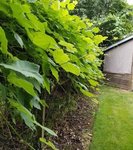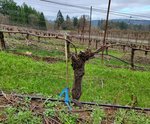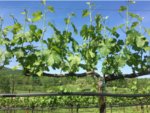




Making the first cut on a batch of out-of-control grapevines can be stressful. Where to start, how much to cut and what pruning techniques to use are all important topics to understand before taking on the task of pruning your grapevines. Those that currently have vines in their yard or are looking to start up the exciting process of growing their own grapes can learn more about the process from the Washington State University Master Gardeners.
On Saturday, Feb. 20, Master Gardeners Stuart Campbell and Bekah Marten will cover the basics of how grapevines grow, how and when to prune them, what techniques to use (spur or cane pruning) and more.
“Our thinking with this one is to focus on the folks that have backyard grapevines or are serious about going in on it,” Campbell explained, noting that the seminar was for both new and experienced growers. “Most of the focus will be on pruning, but we will tell them a little bit about grape vines and touch on fertilization.”
Campbell said one of the biggest problems people have with grapevines is not pruning enough. Each year, gardeners should take off between 75 and 90 percent of the plant.
“If you want to get into grapes but you don’t want to prune, don’t get into grapes,” Campbell said.
Pruning is incredibly important to the health and production of a grape plant. The process keeps the plant in a defined space of growth and opens up the plant so more sunlight and nutrients can reach it, enhancing the production and health. Trimming and pruning also reduces the thickness of the vines and limits the risk of moisture getting under the plant and creating mildew.
“That’s one thing I want people to know,” Campbell said. “That they don’t have to be afraid of their vines and that they are the boss, they can take control. And that means good pruning.”
One of Campbell’s biggest priorities for the upcoming workshop is to teach viewers what a vine is, how it grows and why that relates to pruning. The basic anatomy of the plant includes the trunk (the woody part) and the shoots (unmatured canes) and canes. Fruit doesn’t grow on any of the woody parts. Instead, it grows on the spurs (smaller vines) from last year. When pruning in the winter, Campbell said each grower should leave two canes to maximize fruit production and health.
According to Campbell, one of the most important things to remember when thinking about growing planting and growing grape vines is the amount of space each vine requires.
“Grape vines require at least 50 square feet of space per vine,” he said. “And that is under good maintenance.”
Campbell explained that this 50 square feet of space doesn’t have to be a flat piece of land as grapevines need a support system to grow. This structure can be a traditional wooden or metal trellis or a backyard structure like an archway or a gazebo. Campbell said planting them to grow on structures in a yard can serve a dual purpose as grapes and their vines can be aesthetically pleasing in a backyard sanctuary while also producing fruit.
“Training and pruning go hand in hand,” Campbell said, mentioning that training is the act of directing the vine to grow on a structure. “Just remember that you won’t be able to pick the fruit if you grow it into your apple tree, and you want to design it so you can get to it.”
Grapevines go dormant in the winter, so late winter and early spring are the best times to prune. Just after Campbell’s workshop would be a great time to get out in the garden. For two vines, Campbell said pruning only takes about two hours once a year and should be done every year, so a commitment is required. Campbell was sure to note that the upcoming presentation is best for those looking to grow table grapes in their yard. Those looking to cultivate wine grapes need a lot more space and much more of a time commitment.
Registration for the workshop is free and available at bit.ly/3sOH0qL.